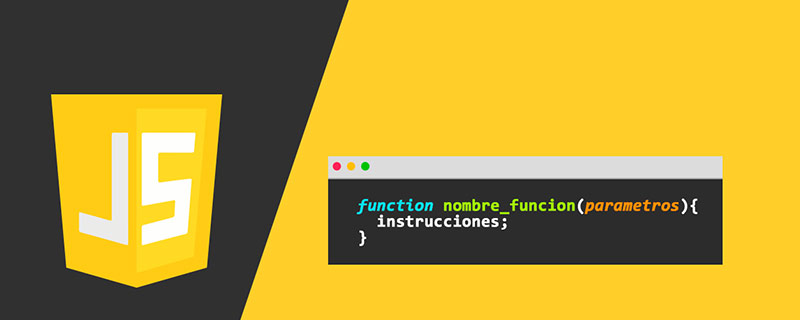The content of this article is to explain the code examples of js closure. It has certain reference value. Friends in need can refer to it. I hope it will be helpful to you.
To be precise, closures are based on the normal garbage collection processing mechanism. In other words, generally after a function (function scope) is executed, all variables declared in it will be released and recycled by the garbage collector. But the closure uses a trick to allow the variables in the scope to be saved and not garbage collected after the function is executed.
Closure
DefinitionMDN Definition
javascriptkit
Lexical scope
Scope chainDuring the execution of the function, first If you can't find the variable from within yourself, then look for it from the scope (lexical scope) where the current function is created. From this point on, you should pay attention to the current state of the variable.
Scope chain Blog
The function, together with the variable it is looking for in its scope chain, together form a closure
Generally, closures are used mainly to
encapsulate data
Temporary data
A typical closure case
function car(){
var speed = 0
function fn(){
speed++
console.log(speed)
}
return fn
}
var speedUp = car()
speedUp() //1
speedUp() //2
When the following code is not executed inside the function
function fn(){
speed++
console.log(speed)
}
return fn
After the code execution is completed, inside the function The local variable speed will be destroyed. Since the global scalar speedUp always exists (unless the current page is closed, the global variable always exists), then the scope inside the function cannot be destroyed, and there are things in it that are always used. This is consistent with The browser's garbage collection mechanism is similar. When we execute speedUp(), it will search in the lexical scope of the function, and a fn is returned in the function, thus forming a closure. It can be simply understood as
var speed = 0
function fn(){
speed++
console.log(speed)
}
This piece of code forms a closure. If fn is not returned, the local variables inside the function will be destroyed.
We can take a look at how the above code can evolve using immediate execution statements and immediate execution functions:
Related cases offunction car(){
var speed = 0
function fn(){
speed++
console.log(speed)
}
return fn
}
var speedUp = car()
//1
function car(){
var speed = 0
return function (){
speed++
console.log(speed)
}
}
var speedUp = car()
//2
function car(speed){
return function (){
speed++
console.log(speed)
}
}
var speedUp = car(3)
//3
function car(){
var speed = arguments[0]
return function (){
speed++
console.log(speed)
}
}
var speedUp = car()
//4
function car(){
var speed = 0
return function (){
speed++
console.log(speed)
}
}
//5 car可以不写,则为匿名函数
var speedUp = (function car(speed){
return function (){
speed++
console.log(speed)
}
}
)(3) closureHow much does the following code output? If you want to output 3, how to modify the code?
var fnArr = [];
for (var i = 0; i <p>Equal evolution</p><p>Assume there are only two levels of loops: </p><pre class="brush:php;toolbar:false">var fnArr = []
for (var i = 0; i <p>After transformation (immediate execution of statements, evolution process) </p><pre class="brush:php;toolbar:false">var fnArr = []
for (var i = 0; i <p>Encapsulate a Car object</p><pre class="brush:php;toolbar:false">var Car = (function(){
var speed = 0;
function set(s){
speed = s
}
function get(){
return speed
}
function speedUp(){
speed++
}
function speedDown(){
speed--
}
return {
setSpeed: setSpeed,
get: get,
speedUp: speedUp,
speedDown: speedDown
}
})()
Car.set(30)
Car.get() //30
Car.speedUp()
Car.get() //31
Car.speedDown()
Car.get() //3How much does the following code output? How to continuously output 0,1,2,3,4
for(var i=0; i<p>The output result is: delayer:5 (5 consecutive outputs). When executing setTimeout, the code will be hung in the middle area of the task queue until i traversal is completed. Then execute, and at this time i = 5, so delayer:5 is output (5 consecutive outputs) </p><p>After modification</p><pre class="brush:php;toolbar:false">for(var i=0; i<p>or</p><pre class="brush:php;toolbar:false">for(var i=0; i<p>How much does the following code output? </p><pre class="brush:php;toolbar:false">function makeCounter() {
var count = 0
return function() {
return count++
};
}
var counter = makeCounter()
var counter2 = makeCounter();
console.log( counter() ) // 0
console.log( counter() ) // 1
console.log( counter2() ) // 0
console.log( counter2() ) // 1Complete the code to sort the array by name, age, and any field
var users = [
{ name: "John", age: 20, company: "Baidu" },
{ name: "Pete", age: 18, company: "Alibaba" },
{ name: "Ann", age: 19, company: "Tecent" }
]
users.sort(byName)
users.sort(byAge)
users.sort(byField('company'))Answer
function byName(user1, user2){
return user1.name > user2.name
}
function byAge (user1, user2){
return user1.age > user2.age
}
function byFeild(field){
return function(user1, user2){
return user1[field] > user2[field]
}
}
users.sort(byField('company'))Write a sum function and implement the following calling method
console.log( sum(1)(2) ) // 3 console.log( sum(5)(-1) ) // 4
The above is the detailed content of Code example explanation of js closure. For more information, please follow other related articles on the PHP Chinese website!
 Vercel是什么?怎么部署Node服务?May 07, 2022 pm 09:34 PM
Vercel是什么?怎么部署Node服务?May 07, 2022 pm 09:34 PMVercel是什么?本篇文章带大家了解一下Vercel,并介绍一下在Vercel中部署 Node 服务的方法,希望对大家有所帮助!
 node.js gm是什么Jul 12, 2022 pm 06:28 PM
node.js gm是什么Jul 12, 2022 pm 06:28 PMgm是基于node.js的图片处理插件,它封装了图片处理工具GraphicsMagick(GM)和ImageMagick(IM),可使用spawn的方式调用。gm插件不是node默认安装的,需执行“npm install gm -S”进行安装才可使用。
 怎么使用pkg将Node.js项目打包为可执行文件?Jul 26, 2022 pm 07:33 PM
怎么使用pkg将Node.js项目打包为可执行文件?Jul 26, 2022 pm 07:33 PM如何用pkg打包nodejs可执行文件?下面本篇文章给大家介绍一下使用pkg将Node.js项目打包为可执行文件的方法,希望对大家有所帮助!
 一文解析package.json和package-lock.jsonSep 01, 2022 pm 08:02 PM
一文解析package.json和package-lock.jsonSep 01, 2022 pm 08:02 PM本篇文章带大家详解package.json和package-lock.json文件,希望对大家有所帮助!
 分享一个Nodejs web框架:FastifyAug 04, 2022 pm 09:23 PM
分享一个Nodejs web框架:FastifyAug 04, 2022 pm 09:23 PM本篇文章给大家分享一个Nodejs web框架:Fastify,简单介绍一下Fastify支持的特性、Fastify支持的插件以及Fastify的使用方法,希望对大家有所帮助!
 node爬取数据实例:聊聊怎么抓取小说章节May 02, 2022 am 10:00 AM
node爬取数据实例:聊聊怎么抓取小说章节May 02, 2022 am 10:00 AMnode怎么爬取数据?下面本篇文章给大家分享一个node爬虫实例,聊聊利用node抓取小说章节的方法,希望对大家有所帮助!
 手把手带你使用Node.js和adb开发一个手机备份小工具Apr 14, 2022 pm 09:06 PM
手把手带你使用Node.js和adb开发一个手机备份小工具Apr 14, 2022 pm 09:06 PM本篇文章给大家分享一个Node实战,介绍一下使用Node.js和adb怎么开发一个手机备份小工具,希望对大家有所帮助!
 图文详解node.js如何构建web服务器Aug 08, 2022 am 10:27 AM
图文详解node.js如何构建web服务器Aug 08, 2022 am 10:27 AM先介绍node.js的安装,再介绍使用node.js构建一个简单的web服务器,最后通过一个简单的示例,演示网页与服务器之间的数据交互的实现。


Hot AI Tools

Undresser.AI Undress
AI-powered app for creating realistic nude photos

AI Clothes Remover
Online AI tool for removing clothes from photos.

Undress AI Tool
Undress images for free

Clothoff.io
AI clothes remover

AI Hentai Generator
Generate AI Hentai for free.

Hot Article

Hot Tools

SAP NetWeaver Server Adapter for Eclipse
Integrate Eclipse with SAP NetWeaver application server.

Dreamweaver Mac version
Visual web development tools

ZendStudio 13.5.1 Mac
Powerful PHP integrated development environment

Atom editor mac version download
The most popular open source editor

SublimeText3 Linux new version
SublimeText3 Linux latest version






